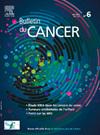[生育力保存和造血干细胞移植(SFGM-TC)]。
IF 1.1
4区 医学
Q4 ONCOLOGY
引用次数: 0
摘要
造血干细胞移植前的调理方案通过使用性腺照射和/或双功能烷化剂对患者的生育能力产生影响。它们对生育能力的影响主要取决于使用的剂量,对女性而言,则取决于治疗时的年龄。所有患者在治疗前都应接受咨询,了解对生育能力的潜在影响和保留生育能力的技术。在没有禁忌症的情况下,骨髓溶解调理方案的主要毒性证明保留生育力是合理的。有关减低强度调理后生育能力的数据很少。尽管理论上性腺毒性较低,但我们也建议尽可能在移植前保留生育能力。采用何种生育力保存技术取决于患者的年龄、病理和调理情况。如果随后在急性白血病或侵袭性淋巴瘤的情况下使用采集的性腺组织,建议评估肿瘤细胞再次引入的风险。最后,建议在移植后评估性腺功能,尤其是在减少调理后。如果性腺功能持续残留,则应讨论治疗后的生育能力保护问题。本文章由计算机程序翻译,如有差异,请以英文原文为准。
Fertilité et greffe de cellules souches hématopoïétiques (SFGM-TC)
Les conditionnements réalisés avant greffe de cellules souches hématopoïétiques ont un impact sur la fertilité des patients du fait de l’utilisation d’une irradiation gonadique et/ou d’agents alkylants bifonctionnels. Leur impact sur la fertilité dépend principalement de la dose utilisée et chez la femme de l’âge au moment du traitement. Tous les patients doivent bénéficier avant la greffe d’une consultation les informant des conséquences potentielles sur la fertilité et des techniques envisageables de préservation de la fertilité. La toxicité majeure des conditionnements myéloablatifs justifie, en l’absence de contre-indications, la réalisation d’une préservation de la fertilité. Il y a peu de données concernant la fertilité après un conditionnement d’intensité réduite. Malgré une gonadotoxicité théorique plus faible, nous recommandons également une préservation de la fertilité si possible avant greffe. Les techniques de préservation de la fertilité utilisées dépendent de l’âge des patients, de la pathologie et du conditionnement. En cas d’utilisation ultérieure du tissu gonadique prélevé dans un contexte de leucémie aiguë ou de lymphome agressif, il est recommandé d’évaluer le risque de réintroduction de cellules tumorales. Enfin, il est recommandé de réaliser une étude de la fonction gonadique à distance de la greffe notamment après conditionnement réduit. En cas de fonction gonadique résiduelle, une préservation de la fertilité post-traitement peut être réalisée.
Conditioning regimen prior to hematopoietic stem cell transplantation have an impact on patient fertility through the use of gonadal irradiation and/or bifunctional alkylating agents. Their impact on fertility depends mainly on the dose used and, in women, on age at the time of treatment. All patients should benefit before treatment from a consultation informing them of the potential impact on fertility and of fertility preservation techniques. In the absence of contraindications, the major toxicity of myeloablative conditioning regimen justifies fertility preservation. There are few data concerning fertility after reduced-intensity conditioning. Despite lower theoretical gonadotoxicity, we also recommend fertility preservation, if possible before transplantation. The fertility preservation techniques used depend on the patient's age, pathology and conditioning. In the event of subsequent use of harvested gonadal tissue in the context of acute leukemia or aggressive lymphoma, it is advisable to assess the risk of reintroduction of tumor cells. Finally, it is recommended to assess gonadal function after transplant, especially after reduced conditioning. If there is persistent residual gonadal function, post-treatment fertility preservation should be discuss.
求助全文
通过发布文献求助,成功后即可免费获取论文全文。
去求助
来源期刊

Bulletin Du Cancer
医学-肿瘤学
CiteScore
1.90
自引率
16.70%
发文量
224
审稿时长
37 days
期刊介绍:
Without doubt, the ''Bulletin du Cancer'' is the French language publication of reference in the field of cancerology. Official organ of the French Society of Cancer, this journal covers all the information available, whether in the form of original articles or review articles, but also clinical cases and letters to the editor, including various disciplines as onco-hematology, solids tumors, medical oncology, pharmacology, epidemiology, biology as well as fundamental research in cancerology. The journal proposes a clinical and therapeutic approach of high scientific standard and regular updates in knowledge are thus made possible. Articles can be submitted in French or English.
 求助内容:
求助内容: 应助结果提醒方式:
应助结果提醒方式:


